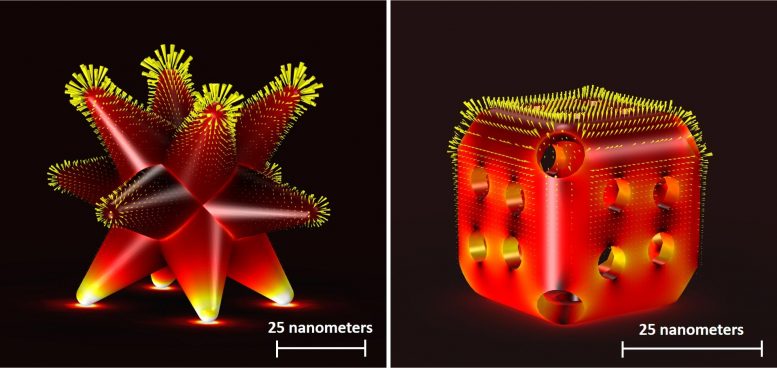
Nanoscale catalysts for environmental remediation can become unstable during use. Understanding their atomic changes may help design more durable materials.
New research is showing that some tiny catalysts being considered for industrial-scale environmental remediation efforts may be unstable during operation.
Chemists from the University of Waterloo studied the structures of complex catalysts known as “nanoscale electrocatalysts” and found that they are not as stable as scientists once thought. When electricity flows through them during use, the atoms may rearrange. In some cases, the researchers found, electrocatalysts degrade completely.
Understanding why and how this rearrangement and degradation happens is the first step to using these nanoscale electrocatalysts in environmental remediation efforts such as removing atmospheric carbon dioxide and groundwater contaminants and transforming them into higher-value products such as fuels.
Performance vs. Stability
“Current electrocatalysts rely on complex nanoscale structures in order to optimize their efficiency,” said Anna Klinkova, a professor in Waterloo’s Department of Chemistry. “What we found, however, is that the superior performance of these complex nanomaterials often come at a cost of their gradual structural degradation, as there is a trade-off between their effectiveness and stability.”
Klinkova and her team discovered that the rearrangement of atoms in the catalyst depended on the type of metal, structural shape, and the reaction conditions of the catalyst.
Molecule Attachment and Electromigration
They identified two reasons for the rearrangements. Some small molecules can temporarily attach to the surface of the catalyst and reduce the energy needed for an atom to move across the surface. In other cases, narrow areas within the catalyst concentrate the electron’s current, causing the metal atoms to displace via a process called electromigration.
Electromigration has been previously identified in microelectronics, but this is the first time it has been connected to nanoscale catalysts.
These findings establish a framework for assessing structural stability and mapping the changing geometry of nanoscale catalysts, which is an important step to designing better catalysts in the future.
“These structural effects could be used as one of the design rules in future catalyst development to maximize their stability,” Klinkova said. “You could also purposefully induce reconstruction to a different structure that becomes active as the reaction starts.”
Reference: “Interplay of electrochemical and electrical effects induces structural transformations in electrocatalysts” by Feng Li, Xenia V. Medvedeva, Jury J. Medvedev, Evgeniia Khairullina, Helen Engelhardt, Skandan Chandrasekar, Yinzhou Guo, Jian Jin, Anna Lee, Héloïse Thérien-Aubin, Aftab Ahmed, Yuanjie Pang and Anna Klinkova, 3 June 2021, Nature Catalysis.
DOI: 10.1038/s41929-021-00624-y
Never miss a breakthrough: Join the SciTechDaily newsletter.